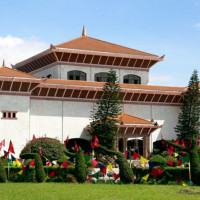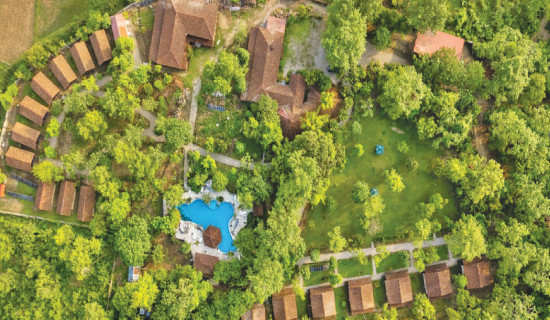- Saturday, 28 June 2025
Blackbuck population multiplies in Shuklaphanta National Park
By Abinash Chaudhary,Dhangadi, June 28: The population of rare blackbucks in Shuklaphanta National Park of Kanchanpur has reached 306.
In the last 13 years since their translocation, the number of blackbucks has increased sevenfold. Forty two blackbucks were brought from various locations and released in the Hirapur grassland of the park in 2012.
According to the park’s information officer, Purushottam Wagle, there are currently 93 adult male blackbucks, 24 semi-adult males, 100 adult females, and 44 semi-adult females. Similarly, there are 45 fawns aged below one year.
Based on local accounts of blackbuck sightings in the Haripur area of Shuklaphanta during the 1960s, it was concluded that blackbucks could survive there. Following this, 28 blackbucks—six from the Central Zoo and 22 from the Nepalgunj Mini Zoo—were brought and released in Haripur flatland area for the first time. In 2015, an additional 14 blackbucks were translocated to Shuklaphanta from Khairapur in Bardiya.
There are now more blackbucks in the Haripur grassland of the park than in the Blackbuck Conservation Area of Khairapur, Bardiya.
In Haripur, the blackbuck habitat has been expanded to 58.8 hectares by fencing the area. Initially, the habitat was established on 7.5 hectares.
As the population increased, the habitat was also expanded accordingly. However, due to the growing number of blackbucks, managing the expanded habitat has become somewhat challenging.
Discussions are going on about releasing some blackbucks into the natural habitat located in the national park’s core area. Similarly, with tourism in mind, a municipality has also proposed managing blackbucks in its area, according to Wagle.
“Rapti Municipality of Chitwan has submitted a proposal to manage blackbucks within its jurisdiction,” he said. “A file regarding this has been sent to the department.”
According to information officer Wagle, if the department takes a decision, the process of managing some blackbucks in other locations will be taken forward.
It was estimated that blackbucks had become extinct in Nepal around the 1970s. However, after blackbucks were sighted in Khairapur of Bardiya in 1975, efforts began to conserve and increase their population through translocation.
Between 1977 and 1989, a total of 16 blackbucks were translocated to Baghaura Phanta of Bardiya National Park, followed by four more between 1985 and 1988, and another 26 in 1992. However, it is reported that none of them survived there.
In 2009, 16.96 hectares in Gulariya Municipality of Bardiya were declared a Blackbuck Conservation Area, and conservation efforts have since been carried forward there.






-original-thumb.jpg)









